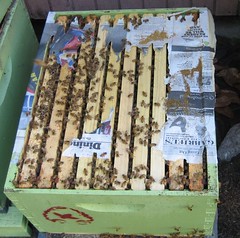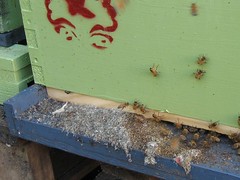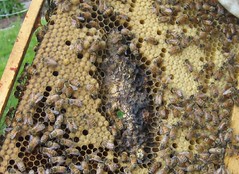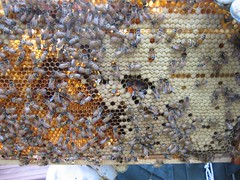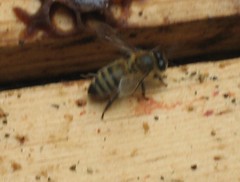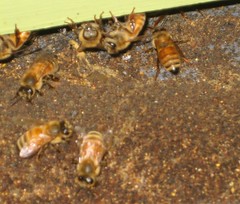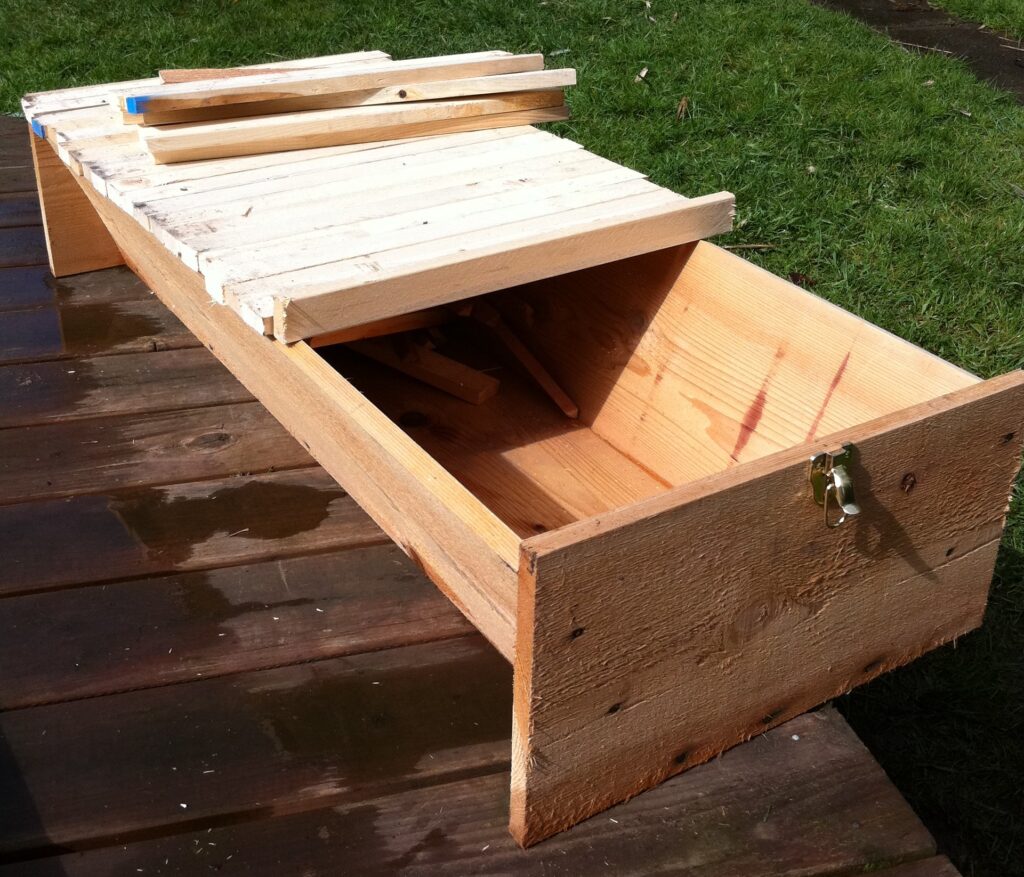It’s been a month and a half since my last post, so lots has happened. First, despite our best efforts, Hive 1 didn’t make it. We waited two weeks for the new queen to start laying eggs, but when we peeked in on June 15th, not only wasn’t she laying, but the frame of brood that we had swapped over from Hive 2 didn’t hatch. Bee brood has to be kept at a nice, warm temperature, like a hen sitting on her eggs, and there just weren’t enough bees left in Hive 1 to keep the hive sufficiently toasty. We found the larvae just as we left them, except shriveled and dessicated in their cells (cue screeching horror movie music). Oh, the humanity!
 One interesting note: some of the honey in the cells apparently fermented in those two weeks. Check out the pictures to the left. Notice the bubbles forming in the honey cells? That’s bee booze! Perhaps, staring certain death in the face, they decided to whip up their version of pruno to pass the time until the inevitable arrived.
One interesting note: some of the honey in the cells apparently fermented in those two weeks. Check out the pictures to the left. Notice the bubbles forming in the honey cells? That’s bee booze! Perhaps, staring certain death in the face, they decided to whip up their version of pruno to pass the time until the inevitable arrived.
Despite the fact that they were proven drunks (or perhaps because of it), we decided to salvage the remains of the hive. We hunted down the queen, who, through no fault of her own, was of no further use to us, and summarily executed her using a method significantly less cruel and inhuman than those approved by the Supreme Court: pressing head between thumb and forefinger until cessation of life occurs. This method ensures a quick and painless death for the bee queen, although it does leave the executioner with a funny tummy upon hearing that unique snapple crackle of a breaking brain case.
Next, we took the lid off Hive 2, laid some newspaper over it, and plunked the Hive 1 box on top. This is how you combine two hives. If you just combined them outright, they see each other as strange invaders in their hive and start fighting and stinging (drunk or no). However, if you separate them with newspaper, they slowly chew through over a period of a week or so, allowing them to get used to each other’s scent before they actually have to interact directly. By the time the newspapers gone, they’re all one big happy family.
Now, the magical part of our story. A week or two back, I pulled an old, out of use hive body out of the garage because it had gotten wet and was molding. I left it tipped against the garage to air out and forgot about it.
Well, yesterday, Michelle and I were sitting in our bedroom, admiring our garden (omigod, you have got to see our tomato plants, they’re HUGE), when Michelle noticed that there were an awful lot of bees buzzing around that box. An awful lot.
Well, I didn’t know that at the time, so I saw these newcomers as a bounty: Hive 1 lives again! We dug out the old bottom and top to the expired Hive 1 (Hive 1a, if you will) dropped them back into place, grabbed the newly occupied hive body from in front of the garage and put it into place next to Hive 2.
We were a bit worried for a bit there that the bees would continue to return to the spot where the hive body was, as bees navigate by landmarks. The rule of thumb on moving hives is that you can move them under ten feet or over a mile. Anything in between, and the bees will just return to the location of their original hive.
However, I felt that because they were so new to this location, it should be alright to move them a middle distance (20 feet or so). We watched the hive over the next couple of hours, and, while there were certainly a large swarm of bees hovering around the spot where the hive was, it gradually diminished, and, I think, they’ve moved happily into their new home at 4065 4th Ave, Apt 1B.
To make sure they were feeling welcome, we mixed up three quarts of sugary water and gave it to them in overturned jars with holes popped in the top. The bee equivalent of the weclome wagon’s apple pie, I guess.


